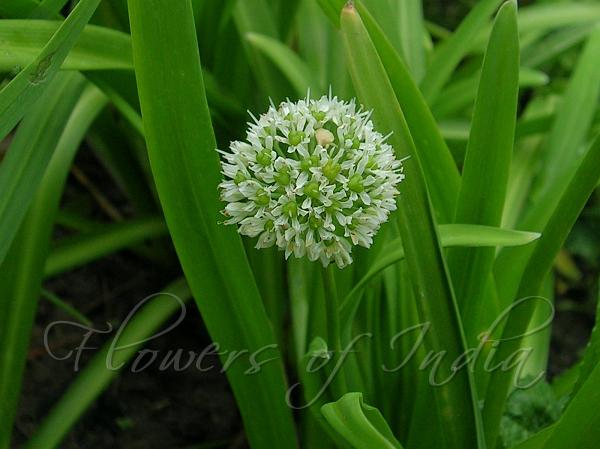|
| East-Himalayan Chives |
|

|

| File size | 164849 |
| Original date | 7/10/05 5:25 PM |
| Resolution | 2048 x 1536 |
| Flash | Flash did not fire, auto |
| Focal length | 8.0mm |
| Exposure time | 1/61s |
| Aperture | 3.2 |
| Focus Distance | |
| Metering Mode | Partial |
| Camera make | NIKON |
| Camera model | E3700 |
| Sensor type |
|
|
|
Photo: |
Botanical name: Allium hookeri Family: Amaryllidaceae (Nargis family)
East-Himalayan Chives is a bulbous herb with thick, fleshy
roots. Bulbs are clustered, cylindric. Leaves are linear to broadly so,
shorter than or nearly equalling the flowering scape, 0.5-1 cm wide,
midvein distinct. Leaves are broader than those of
Garlic Chives. Scape usually arises from
base of bulb, 20-60 cm tall,
usually without leaf sheaths, sometimes with 1. Flowers are borne in
hemispheric to spherical, many flowered umbels. Flower-stalks are nearly
equal, 2-3 time as long as the petals. Tepals are white or greenish
yellow to yellow, lanceshaped, 4-7.5 × 1-1.5 mm, tip long-pointed,
sometimes unequally 2-lobed. Filaments are very narrow, tapering above,
slightly shorter than or equaling the tepals, fused at base and fixed
to perianth segments. In Manipur, the plant is extensively used to garnish
the cooking. It is a fairly common ingradient in pakoras, ommlettes
and an essential ingradient in paaknam, a delicious dish made by
mixing gram flour, Maroi napakpi and fermented fish, and baking
them after wrapping the mixture in turmeric leaf.
East-Himalayan Chives is found in Eastern Himalayas and China, at altitudes of
1400-4200 m. Flowering: July-October.
| Identification credit: R.K. Nimai Singh | Photographed in Manipur |
• Is this flower misidentified? If yes,